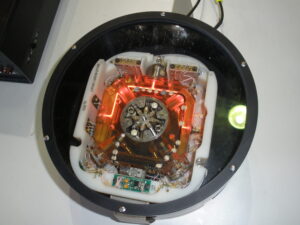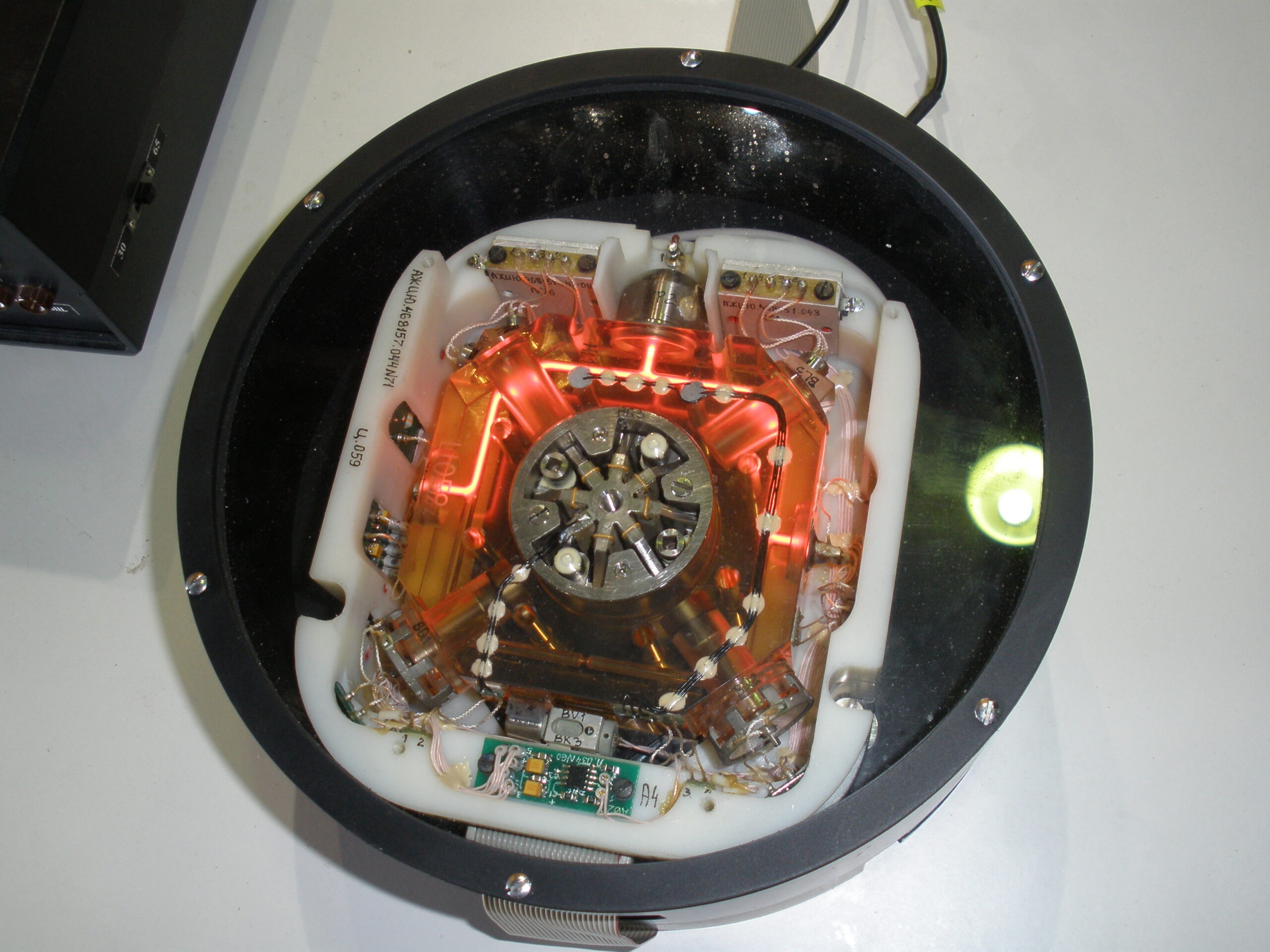In this article, we will explain the important equipment required for RNAV, which is used by almost all passenger aircraft nowadays.
The important equipment is the IRS (Inertial Reference System).
Let’s take a look.
What is an Inertial Navigation System? Explaining Its Mechanism and Use Cases
An Inertial Navigation System (INS) is a device that estimates position and attitude by measuring its own acceleration and angular velocity without relying on external signals.
Because it can determine its own position even in environments where GPS is unavailable, it is widely used in aircraft, submarines, and space probes.
1. Basic Principles of the Self-Contained Navigation System
The autopilot system operates by combining an accelerometer and a gyroscope.
• Accelerometer: Measures acceleration along the XYZ axes and estimates velocity and distance traveled through integration.
• Gyroscope: Measures rotational motion and detects changes in orientation and direction of travel
This system integrates data in real time to calculate your current location. Its key feature is the ability to maintain self-positioning even without external GPS or radio signals, provided the initial location information is correctly set.
For aircraft, an initial position setting called Alignment is performed before takeoff.

2.Examples of Utilizing Onboard Navigation Equipment
① Aircraft and Drones
In aircraft and drones, an “inertial navigation system (INS/GPS)” combining GPS and INS is commonly used. Even if GPS signal is lost, INS provides backup, enabling stable navigation.
② submarine
Since GPS cannot be used underwater, submarines rely primarily on INS for navigation. Particularly for nuclear submarines, INS plays a crucial role because high-precision position measurement is required even during extended voyages.
③ space probe
In outer space, where external reference points are limited, an inertial navigation system is essential. For example, Mars rovers and lunar rovers utilize INS for precise movement.
④ Autonomous driving technology
Even in autonomous vehicles, INS plays a crucial role. It is used in combination with cameras and LiDAR to provide stable position estimation, especially in environments where GPS is unavailable, such as inside tunnels or between tall buildings.
3.Latest Technologies and Future Prospects
The Evolution of High-Precision IMUs (Inertial Measurement Units)
In recent years, the development of MEMS technology (Micro-Electro-Mechanical Systems) has led to the emergence of compact, high-precision IMUs. This has enabled the use of INS in a wider range of fields, such as drones and wearable devices.
Introduction of AI and Machine Learning
AI technology is being incorporated to correct INS errors (drift). For example, integrating sensor data with surrounding environmental information enables more accurate self-localization.
Research on Quantum Inertial Navigation
Research into quantum inertial navigation, which surpasses conventional gyroscopes, is also advancing. By utilizing quantum sensors, navigation with far greater precision than current INS systems is expected to become possible.
INS Summary
Inertial navigation systems are utilized across diverse fields such as aviation, space, maritime, and autonomous driving as a GPS-independent self-positioning technology. Recent technological innovations have enabled the practical application of smaller, higher-precision INS units, and their evolution is expected to continue.
Further advancements in INS technology may enable more stable autonomous vehicles and more precise space exploration.
Next, let’s look at the difference between INS and IRS.
What is the difference between INS and IRS?
This explains the difference between IRS (Inertial Reference System) and INS (Inertial Navigation System) for aircraft and ship inertial navigation.
INS(Inertial Navigation System)
• Role: A device that measures the position, speed, and direction of aircraft or vessels and performs navigation.
• Components: Includes an inertial measurement unit (IMU: gyroscope and accelerometer) and a computer.
• Features:
•Perform self-contained navigation calculations without relying on external information (such as GPS).
• Prolonged use can cause errors (drift) to accumulate.
• Once the primary navigation system for aircraft and ships, it is now often integrated with GPS.
IRS(Inertial Reference System)
• Role: An advanced form of the INS, it measures aircraft attitude (pitch, roll, yaw), acceleration, and geomagnetic data, providing this information to the Flight Management System (FMS) and autopilot.
• Configuration: Includes an IMU like INS, but utilizes more advanced sensors and filtering techniques.
•Features:
• Compared to INS, it places greater emphasis on providing attitude information rather than navigation functions.
• Works in conjunction with the aircraft’s flight management computer (FMC) to enhance navigation accuracy.
•In modern passenger aircraft, IRS is often standard equipment instead of INS.
• It is typically integrated with GPS and operated as an IRS/GPS hybrid system.
Key Differences Between INS and IRS Summary
INS IRS
Purpose Autonomous navigation Providing reference data for attitude, position, and velocity
Primary Outputs Position, velocity, direction of travel Attitude (pitch, roll, yaw), acceleration, position/velocity
Error Correction Integrated with GPS, which is prone to drift accumulation, enabling correction.
Primary Uses Obsolete aircraft, submarines, and space probes Navigation for modern aircraft and spacecraft
Current Usage GPS integration is common Standard equipment on passenger aircraft
Conclusions of INS and IRS
• INS is a device primarily designed for autonomous navigation and was widely used in older navigation systems.
• The IRS is an evolution of the INS, providing reference information for attitude, position, and velocity. When combined with GPS, it enables high-precision navigation.
• In modern passenger aircraft, IRS is installed instead of INS and is typically integrated with GPS for joint operation.
When understanding an aircraft’s navigation system, it’s helpful to grasp the difference in roles between INS and IRS.
I’ve also posted other articles related to airplanes, so if any catch your interest, feel free to give them a read.
What’s the difference of APV from Baro-VNAV?



コメント